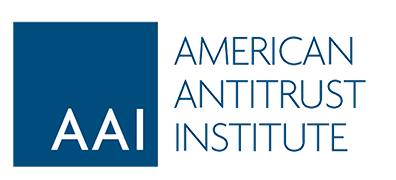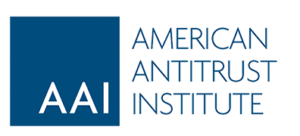AAI has issued the new report Anticipating the Next Generation of Powerful Digital Players: Implications for Competition Policy. The U.S. confronts large “digital business ecosystems” (DBEs) that exercise their market power to maintain dominant positions in search, social media, services, app stores, and eCommerce—to the detriment of competition, consumers, workers. The digital sector poses enormous challenges for competition policy and antitrust enforcement in restraining harmful consolidation and deterring anticompetitive conduct. These hurdles are growing. For example, in failing as the first line of defense against rising concentration and dominance, lax merger enforcement has put enormous pressure on already impaired monopoly law to address market power concerns in the digital sector. Yet the U.S. is making relatively slow progress in addressing the significant competition concerns in the digital sector. While political attention and legislative initiatives remain focused on the largest players, empirical analysis in this report indicates that a growing “next generation” of powerful digital players is on their heels. Competition policy in the digital sector should not overlook them.
Previous AAI research reveals that the DBE business model is host to unique economic features and “growth by acquisition” that make it a formidable source of market power. Up-and-coming digital players will therefore raise the same market power concerns as the current large, incumbents. his report seeks to identify this group of players and explore their characteristics. It identifies a sample of public and private digital companies that have the distinctive features of DBEs and other specialized digital players that could grow to dominance or provide rich acquisition targets. Once identified, we evaluate their key characteristics, such as age, value, and acquisitiveness. We then examine those features using a number of comparisons, including digitals v. non-digital firms, digitals v. “super-digitals,” and public v. private digitals, to identify key trends in business creation and expansion, and what they might mean for competition policy in the U.S.
Major takeaways from the analysis in this AAI report reveal that digital companies are far higher in value and grow more through acquisition than non-digital companies. Moreover, a subset of super-digital firms with specialized focus on critical DBE technologies and capabilities are more valuable and acquisitive than all digital firms. Trends in business creation and acquisitions by large, first-generation DBEs indicate that while they may be mature and acquiring at a lower rate, smaller digital firms continue to grow rapidly through acquisition. Some of these firms will present rich take-over targets that could accelerate the growth of other up-and-coming digital players. Others represent the next generation of potentially powerful firms that pose the same market power risks as today’s large players. They are less likely to challenge the entrenched market position of today’s largest DBEs and more likely to grow to dominance in niche markets such as fintech, online real estate, internet-based healthcare, B2B services, and others.
The analysis in this report has important, and immediate, implications for competition policy, including:
- Broad Scope for Competition Policy. Competition policy in the digital sector should focus on pre-emptively addressing the accretion of market power by acquisitive digital firms. It should be based on forward-looking analysis of the next likely wave of expansion and focus on the entire sector, not just the largest of the first generation of DBEs.
- Dedicated Digital Sector Regulator. Antitrust alone cannot address the market power issues raised in the digital sector. The complexity of the DBE business model, pervasive market failures, and technology-intensity of the sector supports the need for a dedicated digital sector regulator with technical expertise and rulemaking authority to set, monitor, and enforce competition rules for digital markets.
- Strengthening Antitrust Enforcement. To adequately, and proactively, address market power problems in the digital sector, antitrust enforcers need more resources and authority. These include: support for the government’s ability to block more harmful mergers and acquisitions and to bring successful monopolization cases; stricter standards for acquisitions of potential competitors, and lower HSR reporting thresholds for the digital sector to flag smaller, accretive acquisitions.


